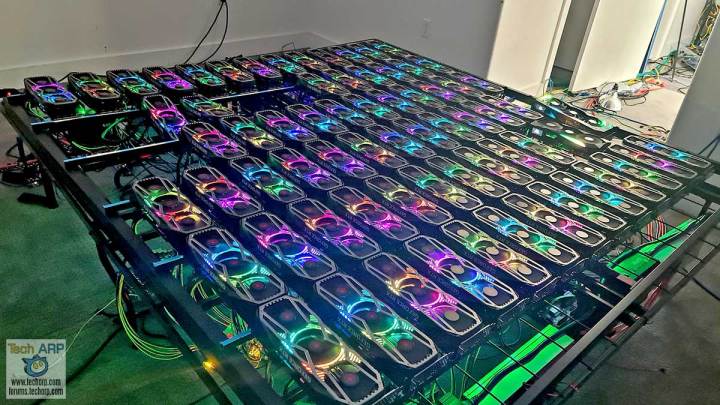We’re sitting on the edge of Nvidia GTC, where it’s all but confirmed the company will launch its next-gen RTX 4090 graphics card. The last time we were in this situation, almost two years ago to the day, Nvidia’s launch kicked off what would become the worst GPU shortage we’ve ever seen, and it’s fair if you’re nervous we might be caught in that situation again.
The RTX 4090 will almost assuredly sell out when it launches, but you don’t need to get your F5 key ready to get a GPU. There were several factors that went into the GPU shortage, none of which apply this time around. If you’ve been waiting for next-gen GPUs to pull the trigger, don’t get caught up in the launch hype — all signs suggest that the
Where demand meets supply

The biggest difference this go around is the lack of a pandemic for supply chains to contend with. We’re down from the peak of cases earlier this year, and although there was a brief spike a couple of months back, it doesn’t seem like we’re headed for another lockdown. That helps, but the main reason we won’t see a shortage comes down to the supply chain.
The chip shortage, which eventually lead to the GPU shortage, has mostly subsided. Supply chain issues haven’t been completely solved, but there are a lot of indications that there’s an excess supply of chips and not enough demand for them. Nvidia hinted at this fact in its most recent earnings call, saying that it has “excess inventory” of RTX 30-series
Demand for PCs, and by extension
Even with an unforeseen COVID spike, it’s unlikely that the supply chain would be in the dire shape it was in 2020. Not only are companies now sitting on excess inventory, but they’ve also already navigated the rocky waters of rebuilding the supply chain during the worst of the pandemic.
Switching partners

Although the pandemic certainly worsened the GPU shortage, it wasn’t the root cause. Nvidia’s issues in the previous generation started with Samsung. RTX 30-series
If you’re not aware, Nvidia is “fabless,” meaning it doesn’t actually manufacture the GPUs in its
Nvidia is using chipmaker TSMC for the
The fateful ‘merge’

Manufacturing issues caused the GPU shortage, but crypto extended it. In particular, Ethereum extended it. Although Bitcoin steals the limelight, the Ethereum blockchain is where the majority of GPU mining took place throughout the shortage — around 25% of all GPU sales during the shortage went to Ethereum miners according to one estimate.
But Ethereum is down bad right now, which is a reason why GPU prices are coming down so quickly. That’s a good sign, but GPU prices have been influenced by crypto for the past four years, so a rebound in Ethereum could’ve spelled disaster. Thankfully, that’s not the case anymore.
Ethereum just went through its long-awaited “merge,” which reduces the energy required for the blockchain and critically eliminates mining entirely. Although the Ethereum Group has been promising the shift for quite some time, it was perpetually delayed. Frankly, it didn’t seem like the “merge” would ever happen, leaving the fate of the upcoming GPU supply in limbo.
Now that the gavel is down, it’s much easier to be confident in upcoming GPU supply. Even if there are shortages, it’s unlikely that another boom in crypto will prolong and worsen the shortage, which is what we saw in 2020 and briefly toward the end of 2017.
Short-term shortages expected

Although it’s very unlikely we’ll see another GPU shortage on the scale of the one that happened in 2020, short-term shortages are likely. Whenever a new generation of GPUs or CPUs launches, there’s a short period of a few weeks where they’re sold out everywhere and prices skyrocket on the secondhand market. Usually, the prices drop quickly as supply stabilizes.
I’m expecting we’ll see an exaggerated version of this with the
That should subside quickly, though, so don’t get caught up in the launch hype. It’s usually a bad idea to buy a GPU the day it releases anyway. The
Editors' Recommendations
- RTX 4090 owners are in for some bad news
- You shouldn’t buy these Nvidia GPUs right now
- Using an RTX 3060? Here’s the GPU to upgrade to next
- These early RTX 4080 Super listings confirmed my worries about the GPU
- Please, don’t buy an AMD GPU right now





